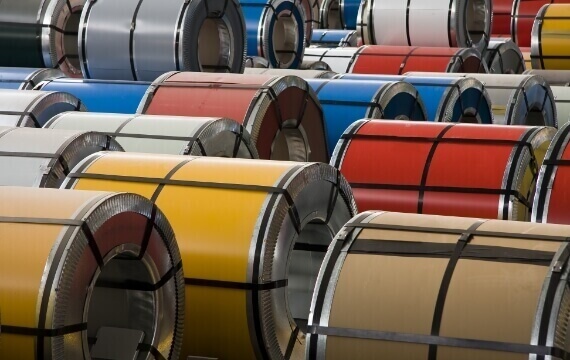Pre-Painted Galvalume (PPGL) steel is a widely used material in construction and industrial applications due to its durability, corrosion resistance, and aesthetic appeal. One of the most critical steps in the production of PPGL is the color coating process. This process not only enhances the material’s visual attributes but also provides an extra layer of protection against environmental factors. In this article, we will delve into the intricacies of the color coating process in PPGL manufacturing.
The Basics of PPGL
PPGL steel is a type of galvanized steel coated with a combination of zinc and aluminum. This composition provides excellent resistance to corrosion, making it suitable for a wide range of applications, including roofing, cladding, and industrial equipment. The color coating process adds a layer of organic paint or resin to the steel surface, improving its durability and giving it a finished look that suits various aesthetic and functional requirements.
Steps in the Color Coating Process
The color coating process in PPGL manufacturing involves several steps, each crucial for achieving the desired quality and performance:
-
Surface Preparation
The process begins with the preparation of the steel surface. The PPGL coil undergoes cleaning to remove impurities such as dirt, oil, and rust. This step ensures that the coating adheres uniformly to the surface. Surface preparation typically involves alkaline cleaning, brushing, and rinsing. -
Chemical Treatment
After cleaning, the steel is treated with chemicals to enhance its corrosion resistance and improve the adhesion of the coating. This step often involves the application of chromates or non-chromate alternatives, depending on environmental regulations and customer preferences. -
Primer Coating
A layer of primer is applied to the prepared steel surface. The primer serves as a base layer that enhances the adhesion of the topcoat and adds an additional layer of protection. The primer coating is cured in an oven to ensure it bonds effectively with the steel. -
Topcoat Application
Once the primer layer is ready, the topcoat—a high-quality organic paint—is applied. This layer determines the final color and texture of the PPGL sheet. The topcoat is available in various finishes, including glossy, matte, and textured, to cater to different design needs. -
Curing Process
After the topcoat is applied, the steel is passed through a curing oven at high temperatures. This step ensures that the coating layers are firmly bonded to the steel surface, providing durability and resistance to chipping and peeling. -
Quality Inspection
The final step involves a thorough inspection of the coated steel. Manufacturers check for uniformity, color consistency, and adherence to quality standards. Any defects are identified and corrected before the product is shipped to customers.
Advantages of the Color Coating Process
The color coating process provides several benefits, making PPGL steel a preferred choice for many applications:
-
Enhanced Aesthetic Appeal: The wide range of colors and finishes allows architects and builders to achieve their desired design goals.
-
Increased Durability: The coating protects the steel from environmental factors such as UV rays, rain, and humidity, extending its lifespan.
-
Cost-Effective Maintenance: Coated PPGL sheets require minimal maintenance, reducing long-term costs.
-
Environmental Benefits: Modern coatings are designed to be eco-friendly, with reduced volatile organic compound (VOC) emissions during manufacturing.
Conclusion
The color coating process is a vital part of PPGL manufacturing, enhancing the material’s functionality and aesthetics. By following meticulous steps and adhering to strict quality standards, manufacturers produce PPGL sheets that meet diverse customer requirements. Whether for roofing, cladding, or other applications, the color coating process ensures that PPGL steel delivers both performance and visual appeal.
